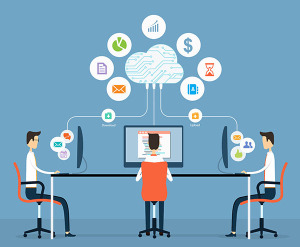
mohamed_hassan / Pixabay
Much attention in 2021 has been on employees and rightly so. We’ve all had to adjust in life and work during an extended pandemic. Media reports about the “Great Resignation” highlight the increasing leverage that employees have in today’s marketplace. Quality team members are in demand and crucial for the long-term success of any business.
If business owners and executives are fortunate enough to have a great team in place, the most pressing question they’re facing right now is, “How can I keep it that way?”
Workplace studies have found that socializing among team members improves communication by 50 percent and that reducing the feeling of employee isolation can, in fact, increase productivity.
Thus, investing in team building strategies and fostering camaraderie is paramount. This article is the final in a four-part series that examines the evolution of building a team to thrive in today’s marketplace. Check out the first article that covers hiring tips, the second piece that explores onboarding, and the third installment about employee retention.
A great deal of uncertainty exists around how best to build and maintain teams, especially as employee preferences evolve. Nevertheless, business leaders must adjust to meet the moment. They should take advantage of new opportunities to identify and build exceptional teams that will, in turn, power company growth. When it comes to ongoing team building, four keys to success will help you keep your awesome team motivated, engaged, and performing at their top level.
Communicate Consistently
Consistent communication is the foundation of a strong team building strategy. It’s important for executives and managers to never assume that “everyone on the team knows what’s going on.” There are many cases where team members might feel out of the loop. Notably, not every employee needs to know everything a company is doing, but it’s vital that everyone fully understand the company’s top priorities, goals, and strategies. And most likely, there are also company policies about which everyone should be aware.
Consider publishing a weekly email newsletter for your team that includes helpful reminders (i.e., open enrollment dates, annual review time, technology upgrades, etc.), information on new clients or business, promotions and new hires, and fun or helpful articles. This email can be brief and in a bulleted format to make it easily digestible.
Monthly team or all company meetings are another highly effective tool for communicating important organizational messages. Whether in-person, virtual, or hybrid, these gatherings should be something team members look forward to. That means business execs and managers need to keep them brief and ensure they’re sharing information that employees want and need to know. For example, a report from the CEO or president and updates from various groups on major projects.
Whether updates come via email or meetings, don’t forget to recognize accomplishments. Be generous with team shout-outs.
Recognize Good Work
Speaking of shout-outs, recognition is another key team building strategy. Simply put, celebrate wins both big and small. Recognition can be as low key as a congratulatory email or as significant as a promotion or raise for great work. The impact is meaningful and makes employees feel appreciated, cultivating loyalty and engagement.
New clients and big wins are great to highlight and should be celebrated. But don’t forget about more personal accomplishments. Did someone pass an accreditation exam or recently complete coursework? Remember to acknowledge them in front of the entire team.
Firm anniversaries are another way to recognize team members and should be highlighted in team emails or meetings. These milestones are significant for employees and should be honored.
Recognition doesn’t just have to happen in a public setting either. Remember to thank employees for their good work. A quick call, visit to their desk, direct email, or personal note all make an impression. Annual reviews and quarterly check-ins also present opportunities to acknowledge employees and their contributions, but make sure that is not the only time someone is recognized.
Focus on Employee Needs
A third valuable team building strategy is to focus on employee needs. Remember that they have lives outside of work. It’s imperative that businesses are as accommodating as possible for team members. Not only is it the right thing to do, but it’s becoming the expectation given the current labor market. What are some ways to focus on employee needs?
Consider allowing and/or encouraging personal time for each employee. Set aside a certain number of hours a month or year to allow your team members to schedule annual physicals, dental appointments, flu shots, and more. This time also could be used for them to attend family or children’s activities, such as plays and sporting events, or participate in charity work. The point is that it’s paid time employees can use for what is important to them outside of the work environment.
Finding ways to give back to local communities demonstrates that you care about your team’s passions. Community service also offers fantastic opportunities for team building events as employees work together to help others in need.
If possible, consider impromptu time off. Everyone loves a good surprise, such as wrapping up work early before a holiday. For example, you could close your office early on the day before Thanksgiving or New Year’s Eve. It might seem like a small gesture, but it shows a deep level of gratitude.
Have Fun
Remember, team building efforts should include having some fun! We’re more productive and effective when we like the people we work with, so encourage that positive interaction. A periodic and/or impromptu happy hour or team lunch is a great way to bring people together.
Don’t forget to commemorate an employee’s personal milestones, such as birthdays, engagements, weddings, or the birth of a child. Celebrations like this remind team members that they’re important to the company and acknowledge that they have a life outside of work and should be proud of that life.
Gifts are always fun too! Give periodic company swag to employees. From mugs and wine glasses to shirts and baseball caps, the possibilities are endless. Think about the type of swag your team members would actually use and even ask them what type of gift would excite them (within reason, of course). These gestures have long-lasting effects on building and maintaining that great team.
Finally, consider companywide or team retreats. In my experience, a well-planned retreat (even an on-site retreat) is the best team building tool. Successful company retreats can bring employees closer together and reinvigorate a team. Since one of the aims of the retreat is to have fun, think of ways to get creative. For our team, we’ve found ways to tap into their artistic side and had great success with improv classes.
By communicating consistently, recognizing good work, focusing on employee needs, and setting aside time to have fun together, leaders can help a team understand goals and feel valued. And then, the likelihood that the team will thrive and succeed increases. Team building in these ways should lead to higher employee satisfaction and greater loyalty – both of which are increasingly important in today’s tight labor market.
Business & Finance Articles on Business 2 Community
(26)








